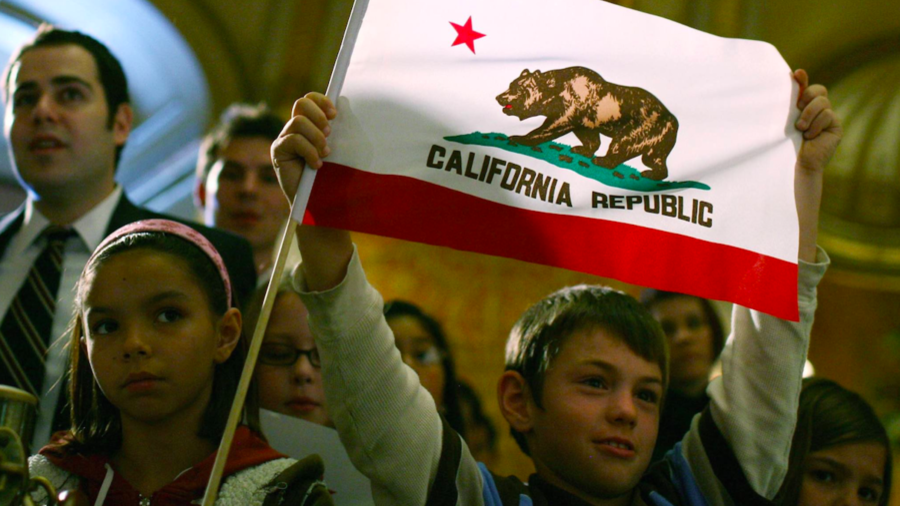‘Buffer zone’ for independent California: New Calexit plan would give Native Americans half of state

Supporters of a long-running effort to see California secede from the United States have revamped their plans to include the creation of an “autonomous Native American nation,” which would encompass almost half of the new state.
‘Calexit’ supporters were given the go-ahead in April this year to begin collecting signatures to get the question of Californian independence on a special 2021 ballot. It will be no easy task, however, because supporters will need to collect 365,880 signatures in order to see the question put to a statewide vote.
Instead of simply seceding from the US, however, the new plans for Calexit involve creating a special Native American “autonomous nation” within the new independent state, creating a “buffer zone between between Donald Trump’s America and the new independent California Republic,” according to Yes California co-founder Marcus Ruiz Evans.
Tomorrow we are releasing the details of the new #Calexit plan which establishes an autonomous Native American nation (not a reservation) - the first of its kind in North America - created through the retrocession of (most) federal properties in California to Native Americans. pic.twitter.com/0iFzosNSPL
— #Calexit Campaign (@YesCalifornia) July 31, 2018
Another movement co-founder, Louis J. Marinelli, explained the decision as a way to “right the some of the wrongs of the past” by giving back land to Native American people.
According to a map published by the Yes California ‘Calexit’ campaign, the long-term plan would see the state sliced down the middle from Oregon in the north to the Mexico border in the south. The new version of California would take up the western, coastal half of the state, which is already home to two-thirds of California’s population. The inland, less-populated regions would make up the Native American ‘autonomous’ zone.
The boundary between the new California and the autonomous zone was decided based on the fact that most of the federal land is located in the eastern regions of California – but there are also be some recognized Native American tribes living in the western part of the state.
In our new #Calexit plan, we retrocede federal land back to Native Americans. Here's a map of federal lands in California. We return virtually all of it Native Americans to establish the first ever Native American nation in North America. pic.twitter.com/CI2wdNoh7i
— #Calexit Campaign (@YesCalifornia) July 31, 2018
The Calexit campaign held a rally at the California state capitol in Sacramento on July 4, calling for an end to the American “occupation” of the state. A statement released by the campaign said that US Independence Day was “no longer a day to celebrate.”
There have been many attempts over the years by various campaign groups to see California secede from the US, but the idea picked up steam with the election of Donald Trump as president in 2016. A 2017 poll, taken after Trump’s election, showed 32 percent support for California secession – up from 20 percent in 2014.
Not to be confused with Calexit, there is also the ‘Cal 3’ campaign, supported by venture capitalist billionaire Tim Draper, which aims to split California into three separate states – Northern California, Southern California and plain old California.
That effort suffered a setback in July when the California Supreme Court blocked the Cal 3 proposal from the November ballot, arguing that such a significant change would require action by the California legislature.
Yes California is even planning ahead for the day when it may need to establish diplomatic relations with other countries. In 2016, the campaign opened an “embassy” in Moscow in an effort to boost trade and tourism.
Marinelli, whose wife is Russian, explained at the time that while the new California was not requesting any military assistance from Russia, it would request “recognition” of independence if a referendum was successful.
The current anti-Russian political climate in the US, however, meant the connection to Moscow did damage to the Calexit campaign. Ruiz Evans told the Bee at the time that people had become “spooked” by the Russian connection and assumed the Calexit movement was somehow the work of Russian President Vladimir Putin.
Recognizing the negative effect on their efforts, the Calexit campaign shut down their unofficial Moscow embassy in 2017. In a statement, Ruiz Evans said that although the project had been "well intentioned" it ended up being a "distraction" and a "source of division" among Calexit supporters.
The Calexit campaign said on Twitter that the new Native American autonomous buffer zone would help the new California advance its progressive platform “without all those Trump supporters trying to derail” the new state “at every turn.”
READ MORE: ‘Calexit’: Yes California movement opens ‘embassy’ in Moscow
In fact, the Calexit campaign takes comfort from the fact that many American conservatives outside of California seem to be open to the idea of getting rid of California.
Marinelli told Fox News that conservatives are “constantly” emailing about how they want the bothersome state to secede or “break off and fall into the ocean” and leave the rest of the US alone. “We would love to see official numbers on nationwide support for Calexit,” he said.
If you like this story, share it with a friend!














